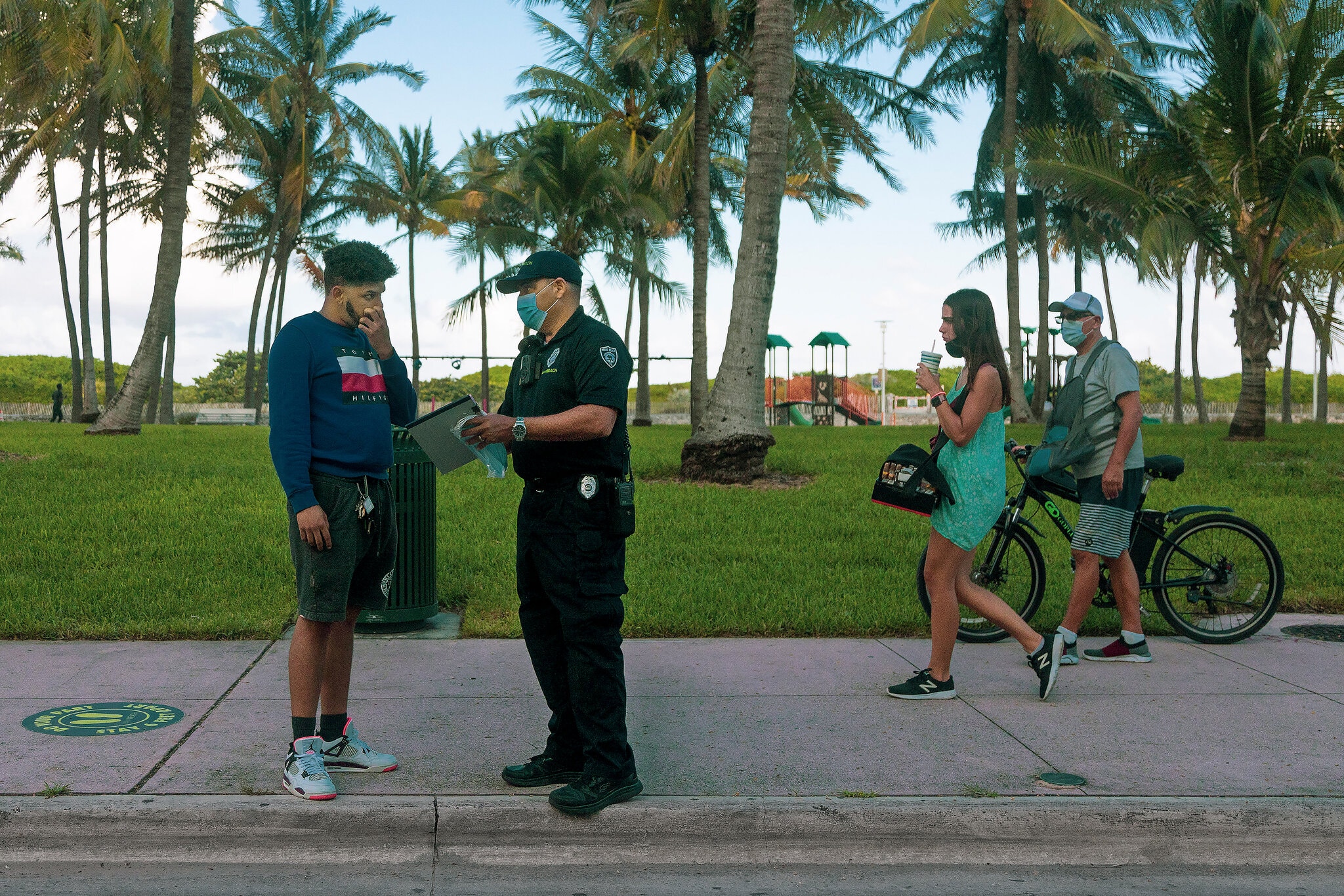When the New York Times weighs in to fact check the CDC, you know something is in the wind. On Tuesday, reporter David Leonhardt wrote a scathing criticism of the U.S. Federal Health Authority’s recent advice that “less than 10%” of COVID-19 transmission is occurring outdoors.
Leonhardt points out that while this is technically true, it is like saying “sharks attack fewer than 20,000 swimmers a year” when the actual number is around 150 worldwide. “It’s both true and deceiving,” he says.
He calls this “an example of how the CDC is struggling to communicate effectively, and leaving many people confused about what’s truly risky”. The CDC places “such a high priority on caution that many Americans are bewildered by the agency’s long list of recommendations”.
They continue to treat outdoor transmission as a major risk. The CDC says that unvaccinated people should wear masks in most outdoor settings and vaccinated people should wear them at “large public venues”; summer camps should require children to wear masks virtually “at all times”.
However, in reality, “there is not a single documented Covid infection anywhere in the world from casual outdoor interactions, such as walking past someone on a street or eating at a nearby table”.
Leonhardt digs into the studies that supposedly underpin the CDC’s advice and finds layers of conservative over-caution.
Many of the instances of “outdoor transmission” in the literature turn out to be from construction sites in Singapore. This appears to be a classification issue.
The Singapore data originally comes from a Government database there. That database does not categorise the construction-site cases as outdoor transmission, Yap Wei Qiang, a spokesman for the Ministry of Health, told my colleague Shashank Bengali. “We didn’t classify it according to outdoors or indoors,” Yap said. “It could have been workplace transmission where it happens outdoors at the site, or it could also have happened indoors within the construction site.”
The decision that they were outdoors was made by researchers making conservative assumptions.
“We had to settle on one classification for building sites,” Quentin Leclerc, a French researcher and co-author of one of the papers analysing Singapore, told me, “and ultimately decided on a conservative outdoor definition.” Another paper, published in the Journal of Infection and Public Health, counted only two settings as indoors: “mass accommodation and residential facilities.” It defined all of these settings as outdoors: “workplace, health care, education, social events, travel, catering, leisure and shopping.”
Even with this conservative definition, however, the studies still found only a maximum of 1% of infections were caught outdoors.
So where did the CDC get 10% from? Leonhardt enquired and received this statement:
There are limited data on outdoor transmission. The data we do have supports the hypothesis that the risk of outdoor transmission is low. 10% is a conservative estimate from a recent systematic review of peer-reviewed papers. CDC cannot provide the specific risk level for every activity in every community and errs on the side of protection when it comes to recommending steps to protect health. It is important for people and communities to consider their own situations and risks and to take appropriate steps to protect their health.
The systematic review referred to is not provided so we cannot see their working, but it’s clear that this is another conservative estimate on top of a conservative estimate. Then the advice based on it, that this “less than 10%” transmission risk warrants wearing a mask outdoors most of the time even when vaccinated, is conservative on steroids smoking a pipe.
Some may think being over-cautious has no downside. Leonhardt disagrees. “Erring on the side of protection”, he says, “has contributed to widespread public confusion about what really matters”.
Unfortunately, for him “what really matters” includes wearing a mask indoors, which apparently makes “a huge difference”. He points to Britain, claiming that our “scientific approach” of being “more aggressive” and “requiring masks indoors even as most of the country is vaccinated” while being easy-going about outdoor masks is not doing us any harm.
Perhaps he would be interested to know then that the UK Government’s scientific advisers wouldn’t agree that masks make a “huge difference” indoors. In fact, they claim they offer no real protection to the wearer and, in terms of protecting others, cite a review study that states it could find no evidence above low quality for such an effect. They seem to misunderstand this study however and claim to have evidence that masks reduce transmission to others by 6-15%. While not a fair representation of their source, even taken at face value this can hardly be called a belief that masks make a “huge difference”.
Every journey starts with a single step though. The acknowledgement that the advice health authorities dole out might be harmful in its over-caution and even “deceiving” is welcome. Perhaps the New York Times will now develop a healthy taste for scepticism and begin to sniff out what else those in power might not be being entirely honest with us about.













To join in with the discussion please make a donation to The Daily Sceptic.
Profanity and abuse will be removed and may lead to a permanent ban.